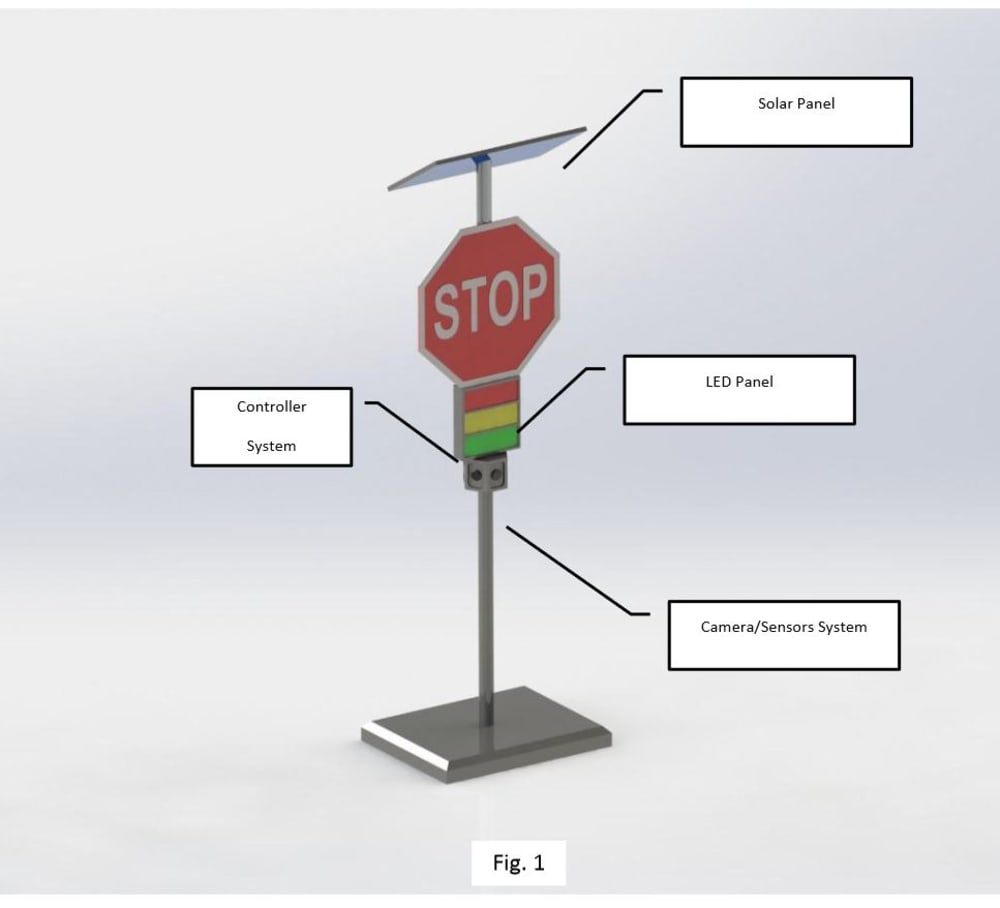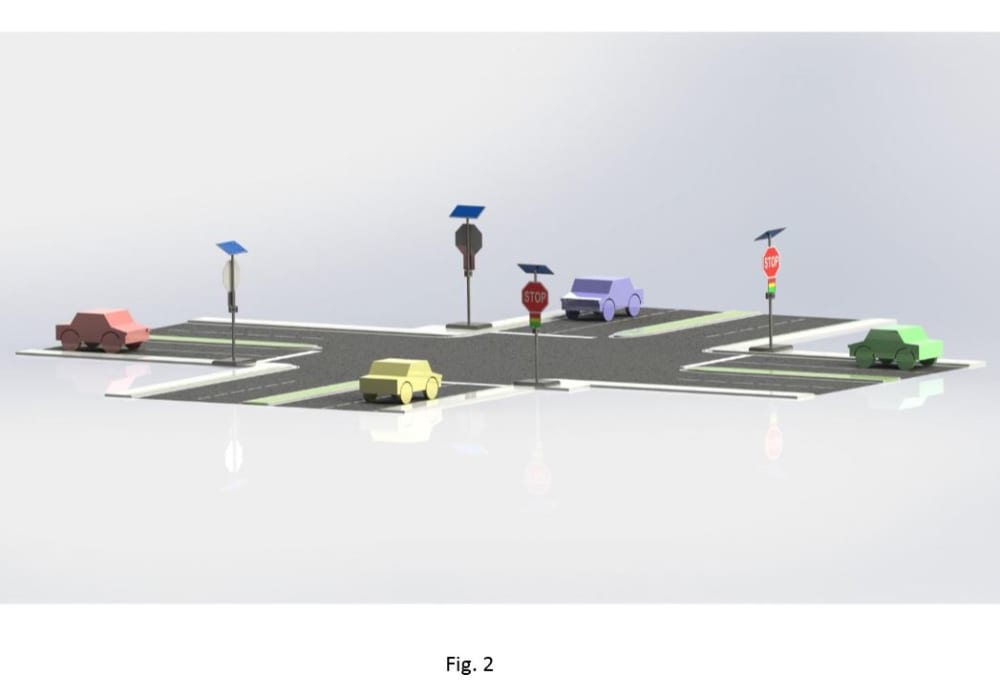Everyday drivers fail to yield, miss or run stop signs. Stop signs are meant to control traffic by means of a common understanding of a stop sign where vehicles will stop fully for at least three seconds and based on subjective observations cars will yield based on first stop, first go.
According to the Fatality Analysis Reporting System, between 1999 and 2000 there were 13,627 fatalities were related to stop signs. One FHWA study says 1/3rd of all intersection crashes in the United States, and more than 40 percent of fatal crashes, occur at stop sign-controlled intersections. The PSS is designed to reduce the number of accidents at stop signs by making priority decisions objective and more obvious.
Technology
PSS uses object sensors, mini cameras, processors, horns and 3 color LEDs (stop, yield, go) powered by solar panels. The processor uses cameras and computer vision to detect on coming vehicles’ speed, distance, deceleration rate and objectively determines its stoppage priority at the stop sign and indicate the decision by flashing lights. The speed data may also be obtained from IR or radar sensors.
When two or more stop signs are used, like at a 4-way junction, the PSS’s wirelessly network and communicate among themselves and determines a vehicles priority as well as intersection safety before the decision on green light is issued. This decision making is the key to this product. If two vehicles start at the same time or a driver is not decelerating as needed, horn sounds to warn.
The technology can be easily adapted as regular traffic signal / pedestrian signal without the need to dig up the road to install load cell or magnetic sensors. It can integrate with current traffic signaling network. Maintenance need is reduced. System can conduct traffic and timing studies by itself.
The PSS will be tamper and weather resistant. Fig. 1 of attached pdf file shows a form of the product. This package shows the form of product that can upgrade any existing stop sign. Another form of the product can be installed like existing stop sign. Fig. 2 of the pdf file shows a deployment of 4 PSS’s at a junction.
The PSS is assembled from commercially available parts such as the camera and solar panels. The processor system has custom software installed on PSS with remote updates.
The cost is significantly less than the traditional traffic signal with additional safety measures while maintaining a constant maintenance cost. Each traditional stop sign costs nearly $1500 to install. The PSS is estimated to cost under $1500-3000 installed depending on volume.
There are approximately 86 million stop signs across the United States. The market opportunity is significant and the impact on the possibility of reducing stop sign related collisions is high with the PSS. A few transportation departments are looking at ways to improve the stop sign. The first steps would be to conduct field test and install the Perfect Stop sign in a number of cities/counties across the US.
Like this entry?
-
About the Entrant
- Name:Sameer Cholayil
- Type of entry:individual
- Patent status:pending





